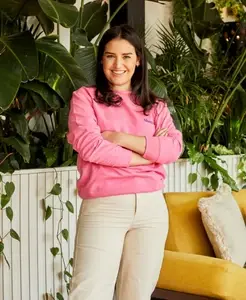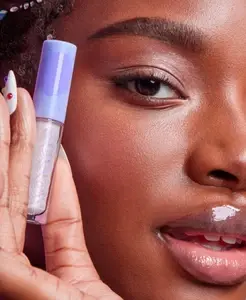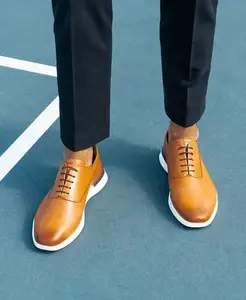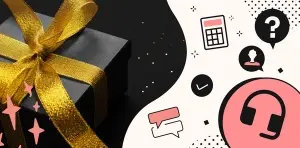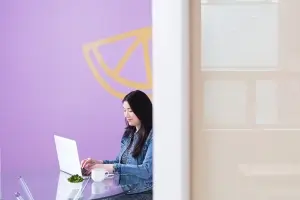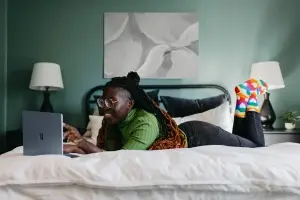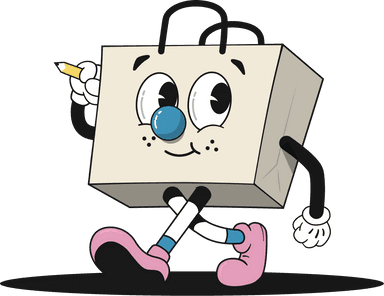Get access to exclusive updates, the latest news and the inside scoop 🍨
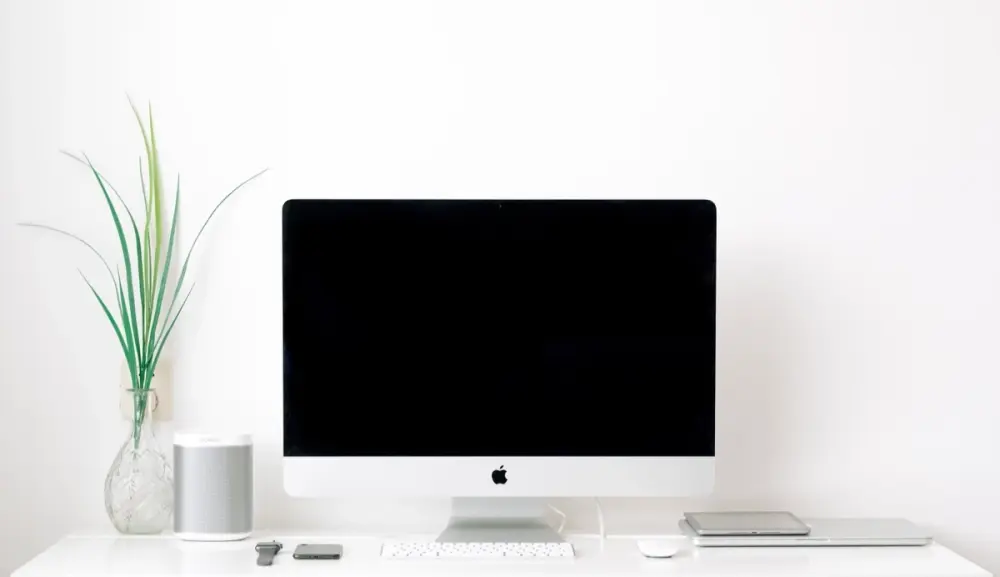
Create Landing Page Designs That Convert
We hear so little talk about the importance of landing page designs that convert, but we’re going to change that.
Don't want to read the whole article? 😏Click here for chapters
- Tips for Shopify Landing Page Designs 🤓
- What Are Landing Page Designs? ✍
- Building Landing Page Designs Around Your Audience
- Utilising Google Analytics 📊
- Best Practices Fail
- The Compelling Elements of Landing Page Designs 🖥️
- Above and Below The Fold
- Crafting A Product Landing Page 🎨
- N0.1: Expand Product Descriptions
- N0.2: Certifications and Selling Propositions 📜
- N0.3: Beneficial Customer Reviews
- N0.4: Upselling and Cross-Selling 💰
- N0.5: The Brag Bar
- Testing Landing Page Designs 🖱️

Written by Madeleine
Tips for Shopify Landing Page Designs 🤓
Ask yourself this, which aspect of a website is usually the first port of call that online browsers will land on? Why - the landing page of course.
We hear so little talk about the importance of landing page designs that convert, but we’re going to change that. So, for today’s article, we thought we’d talk about something that is often overlooked when it comes to the success of online stores.
If you’re wondering why this topic is worth a spot in the journal, it’s because the reality of merchants wasting money on paid advertising is all too real. We bet that’s not what you thought we were going to say, but it couldn’t be more true.
Think about it logically - any money that is invested in paid advertising would be useless if great influxes of traffic are being sent to a poorly constructed landing page.
For instance, if you were a browser, checking out a store, would you be happy to buy something after experiencing a confusing and poorly designed landing page? We think not, especially if we're talking about your first visit to that particular website.
In all honesty, we wouldn’t stick around either. We’d be running for the hills - never to return, but hey, that’s just us but we love web design, so it almost crushes our souls when we stumble across stores that have executed this poorly.
However, going back to the example, it would seem as though many consumers would agree. Not because they're passionate about web design, but because they’re looking for a seamless, helpful and carefree shopping experience.
So, don’t make the whopping mistake of burning a hole in your pocket just to get in front of online shoppers, only to exhaust those prospects and come up short at the last hurdle.
The truth is that even some of the world’s biggest businesses have terrible landing pages and that’s because it's a very common problem. Nonetheless, it is an issue that can be solved by gaining a deeper understanding of your target audience.
What Are Landing Page Designs? ✍
Simply put, landing page designs consist of elements, both visual and written, that make up a web page that is optimised to convert new customers and encourage repeat purchases from loyal buyers.
Simple visual layouts, benefit-driven copy and high-quality imagery are just three of the guiding pillars that compelling landing page designs frequently embody.
Don’t worry, we’re going to expand on the good stuff as we explain how to create seamless landing page designs that convert browsers into customers:
Building Landing Page Designs Around Your Audience
In a nutshell, successfully implemented landing page designs are meant to be based on your target audience and their unique needs.
Therefore, conducting conversion research to accumulate foundational insights are a key component of setting up your store’s landing pages successfully.
Note:Typically, conversion research often includes; user testing, analysing web traffic sources, copy testing and surveys.
See, the thing is that merchants often forget that the landing page is a part of a bigger user journey and as a result, retailers end up burning rubber and wasting their time tweaking shiny things that don't matter in the bigger picture.
However, there are many factors other than the landing page that will affect a user’s decision-making process (from the ad source and device to awareness levels and motivation).
Nonetheless, the more that these aspects are understood, the higher the chances will be of making the right decisions and creating landing pages that make a positive difference to your store's conversions.
Utilising Google Analytics 📊
Building a landing page based on the device consumers shop with is one way to begin your conversion research and Google Analytics is a great partner to help your store uncover where its traffic is coming from.
Note: Take an in-depth look into what kind of device(s) your site’s browsers are shopping with so that you can accommodate your conversion strategy to those users.
For instance, if the majority of customers are visiting a website from a mobile device, that landing page would need to be optimised so that it can offer a great mobile experience.
On the other hand, if you learnt that your store’s customers preferred to shop from the desktop, you’d be better equipped to build a landing page that enhances a full desktop experience.
As a result, this kind of contextual listening will drive a better customer experience.
Best Practices Fail
As we’re sure you’ve gathered, the tips in this article have been successful for the experts who've tested and implemented them into their conversion strategy.
However, here’s a little word to the wise - be careful not to implement these design elements without understanding how they connect to your brand’s goals.
It’s a well-known fact that even the best practices fail when they fall out of context with their strategy, so why should smaller businesses be any different?
Additionally, best practices can also fail without context so, knowing what your target audience wants and needs is the best basis for building high-converting landing pages for your business.
Note: The more your target audience is understood, the better your landing pages will be, so don’t get blinded by the latest design trends. Instead, be sure to have all of the basics in place whilst conducting in-depth user research to make informed decisions that impact customer behaviour, rather than simply tweaking page layouts. It’s also worth mentioning that not all of the landing page design suggestions listed across the web will work in favour of your customers, as what is required will largely depend on your target audience and its needs.
The Compelling Elements of Landing Page Designs 🖥️
You’ve caught the attention of a potential customer and now you have a few seconds to share what makes your brand and its products unique.
It’s a pretty big task to get that across in a few words or images, but this is made even more difficult when a prospect has little information to go on.
So, while the performance of your conversions will depend on a plethora of factors such as; the target audience and the types of products that your business sells, keeping the overall page design simple will help to direct visitors on-site to the information that they need to see.
Ask yourself this - if browsers could take just one thing away from your website, what would it be? Now think about that and show them.
Now it’s time to think about what would make the elements of your store’s landing page designs truly compelling and here’s what we believe the basis of the layout should consist of:
Professional product photography.
Customer testimonial videos and/ or product images.
Benefit-driven sales copy.
Imagery and copy that speaks to your store’s unique selling proposition.
Authentic customer reviews.
Social proof and press coverage.
Note: Depending on the industry and type of product that you are selling, the landing page to which traffic is being sent might look similar to a product landing page.
Above and Below The Fold
If you want our advice, we’d recommend focusing on the flow of information across an entire landing page rather than solely designing for above and below the fold, but there’s more to it than that:
Here’s a little bit more context about the mythical “fold” in your landing page design and why so many people recommend including the important stuff at the top of their customer’s screens:
Site Visitors Don’t Scroll Down
The “fold” is the so-called space on a webpage that’s visible without scrolling but it differs based on the device that a browser is visiting your store from.
Whether this may be; a desktop monitor, tablet, or mobile device, all of which vary in screen size from model to model, but generally speaking, the fold is usually somewhere around 600 pixels from the top of a browser's window.
However, the truth is that not all of your landing page visitors will scroll past the fold of the page when surfing from a desktop or mobile device. The stat is pretty low, as we’ve heard that this is usually between 50% - 85%.
So, we conclude that on the whole, site visitors don’t scroll down and since the percentage of viewers who get past the fold is so low, many professionals in the design space will recommend a strategy based on two parts: what is included above the fold and what is included after it.
Less About The Fold, More About The Hierarchy
No matter what works for your customers, you’ll always want to be thoughtful about the kind of copy and content that you’re inserting at the top of your landing page designs.
Take it from us, trying to cram a bunch of content into the first screen often backfires and results in a very cluttered experience that overwhelms the user.
Instead, marketers should think less about the fold and much more about the overall information hierarchy and flow of content on their landing page.
We’d recommend reflecting on the following questions as you build your landing page designs:
Are you answering the right question(s) and addressing the right barrier(s)?
Are you managing expectations and following up on promises made within the ad source?
Are you delivering the content in the right order and building momentum towards your conversion goal(s)?
Note: If you’re wondering about CTA placements, these will largely depend on the needs of your store’s audience. Relevant CTAs can be determined based on testing placements to see which location drives a better conversion rate for your business.
Crafting A Product Landing Page 🎨
For those of you who don’t know, the rest of the content on your product landing page is there to support the goal of your store's conversion.
Think; in-depth product descriptions, customer reviews and a section focused on why browsers should purchase from your store.
So, that’s the basis of what should be included within this space, but here’s a little more information on how to optimise the bottom half of your store’s landing page designs:
N0.1: Expand Product Descriptions
Product descriptions are likely going to include succinct pieces of copy that immediately translate what your product is.
On these pages, there will be a lot more space to provide the necessary details that directly handle any objections that might block a customer from completing their purchase.
In terms of a typical layout, we’d suggest incorporating a plethora of product images above the fold alongside a list of details and descriptions below the fold.
Note: As you develop your product details, first explain what your product is and what it does (if applicable). Then, bullet out its unique benefits, which will then speak to the pain points that you’re trying to solve and/ or the gap that you’re looking to fill in the market.
N0.2: Certifications and Selling Propositions 📜
Certifications can go a long way with some shoppers, as many of them won’t place an order without them. The message here is that if you’ve been certified for anything, put it on your landing page.
You’ll also likely have some stellar unique selling propositions (USPs) for your products. So, if you haven’t written them down yet, spend some time developing what makes your product different from its competition.
This exercise may take some time, but your USP copy will inform your website's visitors of how your brand is positioned in the market.
N0.3: Beneficial Customer Reviews
Shoppers use reviews to help determine whether a product is right for them all of the time. Therefore, we’d recommend including an entire section that is devoted to customer reviews so that consumers can read the perspectives of real people.
Note: We know it might be tempting to hide the bad, but be sure to show at least a few negative to middle range reviews so that others can get a complete understanding of what previous customers like and dislike about your store’s products.
Even if browsers don’t feel influenced by what others have said, displaying negative to middle range reviews shows a brand to be transparent and trustworthy to its audience.
Furthermore, negative to middle range reviews are a great breeding ground for improvement. Know what they say? Improvement is progress.
N0.4: Upselling and Cross-Selling 💰
You have the attention of a shopper, so why not suggest additional products that they’ll love? If they see something they like, you’re providing a quick and easy way for consumers to add it to their cart.
If you’re not sure how to make this happen, we’ve got the solution. Why not add a plug-in to your website by simply heading to the Shopify App Store?
Then take your pick from the; ReConvert Upsell & Cross Sell, Honeycomb Upsell & Cross Sell or One Click Upsell - Zipify OCU application.
N0.5: The Brag Bar
Have you ever been featured in a news publication such as; Forbes, The New York Times, or Wired before? Featuring those logos across your site’s landing pages is what we like to call a brag bar - especially if there are article extracts involved.
Publications will add credibility to your brand and mentioning them goes a long way with shoppers who are looking for more information.
Testing Landing Page Designs 🖱️
Once you have your landing pages up and running, meaningful traffic will be driven onto your site.
This is great news as you will be able to begin the A/B testing process, analysing different aspects of the landing page to ensure that it’s converting at the highest possible rate.
Note: Tests should be directly proportionate to the factors that are related to your business’ growth model. If you’d like to; acquire more customers, monetise your Instagram, or retain existing customers, the landing page experience and testing hypotheses will need to be adjusted accordingly.
So, that’s it from us. We hope that you have found our guide to creating landing page designs that convert useful.
If you’re actively looking to work with a Shopify agency designer or developer to assist you with your business, we’d love to hear from you. Get in touch to get started!
Get Started with Shopify
Looking to get started with Shopify? Take advantage of Shopify's 14-day free trial, no credit card is required.
If you're actively looking to work with a Shopify agency designer or developer to assist you with your business, we'd love to hear from you. Get in touch to get started!
Want to read some more?
Have a look over more posts related to this one
